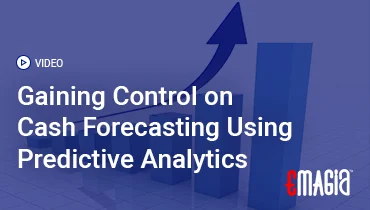Introduction
In the modern digital landscape, organizations are inundated with vast amounts of data, much of which is unstructured. Traditional data processing methods struggle to keep pace with the volume and complexity of this information. Enter the Smart Data Extraction Solution—a sophisticated approach that leverages advanced technologies to automatically extract, process, and utilize data from various sources. This article delves deep into the world of smart data extraction, exploring its components, benefits, challenges, and real-world applications.
Understanding Smart Data Extraction
What is Smart Data Extraction?
Smart Data Extraction refers to the automated process of identifying and retrieving relevant information from diverse data sources, both structured and unstructured. Utilizing technologies like Optical Character Recognition (OCR), Machine Learning (ML), and Natural Language Processing (NLP), these solutions transform raw data into structured formats suitable for analysis and decision-making.
Components of a Smart Data Extraction Solution
- Data Ingestion: Collecting data from various sources such as documents, emails, images, and databases.
- Preprocessing: Cleaning and preparing data to enhance extraction accuracy.
- Extraction Engine: Employing OCR, ML, and NLP to identify and extract pertinent information.
- Validation: Ensuring the accuracy and consistency of extracted data.
- Integration: Seamlessly incorporating the processed data into existing systems like ERPs or CRMs.
Benefits of Implementing Smart Data Extraction
Enhanced Efficiency
Automating data extraction significantly reduces the time and effort required compared to manual processes. For instance, Axis Technical Group’s implementation led to a 75% improvement in turnaround time.
Improved Accuracy
Advanced algorithms minimize human errors, achieving extraction accuracy rates as high as 97%.
Cost Reduction
By streamlining data processing, organizations can achieve substantial cost savings. Axis Technical Group reported a 40% reduction in costs post-implementation.
Scalability
Smart data extraction solutions can handle increasing volumes of data without compromising performance, making them ideal for growing businesses.
Compliance and Security
These solutions often come equipped with features ensuring data privacy and compliance with regulations like GDPR and HIPAA. For example, smartextract ensures 100% GDPR-compliant processing.
Challenges in Smart Data Extraction
Data Quality and Consistency
Variations in data formats and sources can affect extraction accuracy. Ensuring consistent data quality requires robust preprocessing and validation mechanisms.
Handling Unstructured Data
Extracting meaningful information from unstructured data like free-text emails or handwritten notes remains a complex task, necessitating advanced NLP and ML capabilities.
Integration with Existing Systems
Seamless integration with current IT infrastructures is crucial. Solutions like smartextract offer flexible integration options with ERPs and other systems.
Training and Maintenance
Continuous training and updates are essential to maintain the accuracy and relevance of the extraction models.
Real-World Applications of Smart Data Extraction
Healthcare
In the healthcare sector, smart data extraction aids in transforming unstructured patient information into actionable insights, facilitating personalized treatment plans and predictive analytics.
Finance and Accounting
Automating the extraction of financial data from invoices, receipts, and statements streamlines accounting processes, reduces errors, and ensures compliance.
Logistics and Supply Chain
Extracting data from shipping documents, purchase orders, and delivery notes enhances operational efficiency and accuracy in the logistics domain.
Legal and Compliance
Automated extraction of information from legal documents ensures timely compliance checks and reduces the risk of oversight.
Future Trends in Smart Data Extraction
Integration with Artificial Intelligence
The amalgamation of AI with data extraction processes will lead to more intelligent, self-learning systems capable of handling complex data scenarios.
Expansion to Multimedia Data
Future solutions will extend beyond text, enabling extraction from audio and video sources, thus broadening the scope of data analysis.
Enhanced User Interfaces
User-friendly interfaces will make it easier for non-technical users to configure and utilize data extraction tools effectively.
How Emagia’s Smart Data Extraction Solution Transforms Financial Operations
Emagia’s Smart Data Extraction Solution leverages advanced AI and ML technologies to automate the extraction of critical financial data from various documents. By integrating with Emagia’s suite of financial tools, organizations can achieve end-to-end automation in their order-to-cash processes. This not only enhances efficiency but also ensures accuracy and compliance across financial operations.
Frequently Asked Questions
What is a Smart Data Extraction Solution?
A Smart Data Extraction Solution is an advanced software tool that automatically extracts relevant information from various data sources using technologies like OCR, ML, and NLP.
How does smart data extraction differ from traditional methods?
Unlike traditional manual data entry, smart data extraction automates the process, reducing errors and increasing efficiency.
Can smart data extraction handle unstructured data?
Yes, advanced solutions are designed to process unstructured data such as free-text emails, scanned documents, and images.
Is smart data extraction secure?
Many solutions ensure data security and compliance with regulations like GDPR and HIPAA. For instance, smartextract guarantees 100% GDPR-compliant processing.
What industries benefit from smart data extraction?
Industries like healthcare, finance, logistics, and legal services benefit significantly by automating data processing tasks.
Conclusion
Smart Data Extraction Solutions are revolutionizing the way organizations handle data, offering unparalleled efficiency, accuracy, and scalability. By embracing these technologies, businesses can unlock the full potential of their data, driving informed decision-making and gaining a competitive edge in the digital era.



